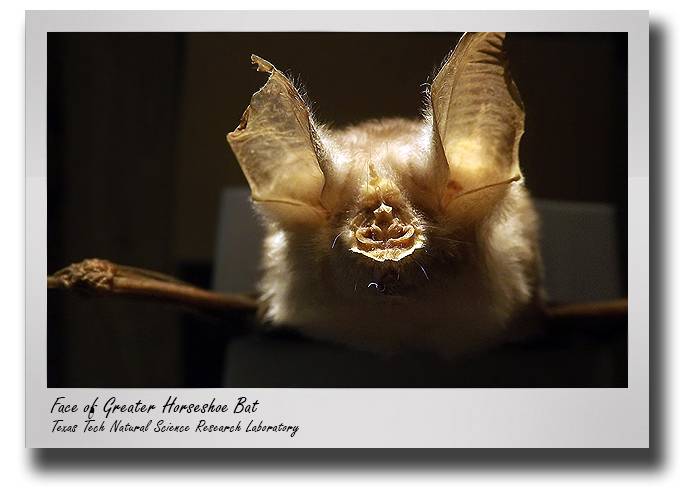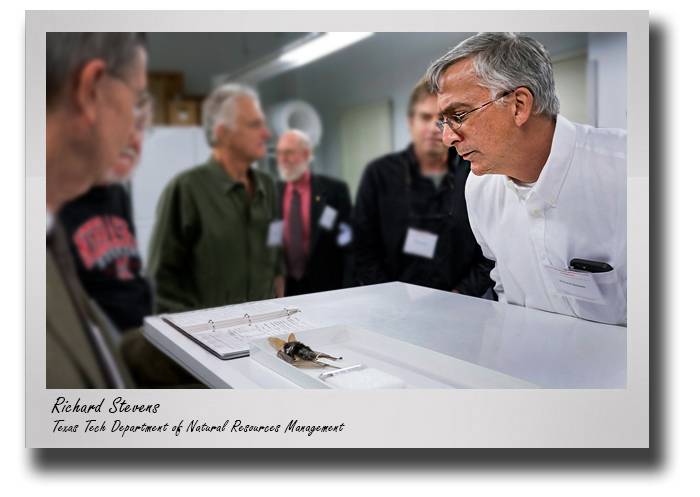Natural Science Research Laboratory provides rich resource for CASNR
By: Norman Martin
 Researchers with Texas Tech’s College of Agricultural Sciences and Natural Resources
have a rare on-campus scientific resource in the form of the university’s Natural
Science Research Laboratory (NSRL), a division of the Museum of Texas Tech University.
Researchers with Texas Tech’s College of Agricultural Sciences and Natural Resources
have a rare on-campus scientific resource in the form of the university’s Natural
Science Research Laboratory (NSRL), a division of the Museum of Texas Tech University.
 In particular, the mammal collection of approximately 150,000 scientific specimens
and 500,000 tissue samples has particularly good representation regionally across
much of Texas and the southwestern United States, as well as across much of North
and South America and the Caribbean. It is the fourth largest university mammal collection
in the nation.
In particular, the mammal collection of approximately 150,000 scientific specimens
and 500,000 tissue samples has particularly good representation regionally across
much of Texas and the southwestern United States, as well as across much of North
and South America and the Caribbean. It is the fourth largest university mammal collection
in the nation.
Across Texas Tech, scientists use NSRL specimens to examine anything from the genetic history of a species to viruses already circulating in animals that may one day affect humans. The collections also address environmental change over time.
“This is incredibly important scientific infrastructure that is a very rich resource,” said Richard Stevens, NSRL’s Curator of Mammals and a President’s Excellence in Research Professor in Tech’s Department of Natural Resources Management.
“As humans continue to modify the biosphere, in particular impacting climate change and accelerating land-use change, these collections will be exceedingly important as a baseline for how things used to be, thereby allowing us to measure our impacts,” he said. “They’ll provide an important baseline that can be used to define the goal of any sort of restoration efforts.”
Robert Bradley, a professor in Tech’s Department of Biological Sciences and the museum's NSRL Director, explains the lab is like a library for natural history. “When you go into a library, there are a bunch of books going as far back in time as we can go, and it's a resource,” he said. “We serve as a resource for documenting, and having representatives of, the biodiversity that's around us.”
 Earlier this year CASNR officials announced a $175,000 grant from the National Science
Foundation to begin three-dimensional digitization of a special group of bat specimens
from NSRL. Part of the project's goal is to make this newly input digital data freely
available to almost anyone with an internet connection.
Earlier this year CASNR officials announced a $175,000 grant from the National Science
Foundation to begin three-dimensional digitization of a special group of bat specimens
from NSRL. Part of the project's goal is to make this newly input digital data freely
available to almost anyone with an internet connection.
Stevens and Bradley are set to CT Scan 1,000 bat specimens from one of the most diverse families of bats in the world - Phyllostomid bats. The bats are distributed from Texas and the southwest United States south to Paraguay and Argentina.
The NSRL has a community outreach mission, too. For instance in November, the NSRL loaned a selection of taxidermy specimens ranging from waterfowl to a bobcat and a turtle to a curved-bill thrasher for a display at CASNR's 94th Annual Pig Roast. More than 700 CASNR faculty, staff, students, alumni, and family members attended the event at Lubbock’s Civic Center.
CONTACT: Richard Stevens, President's Excellence in Research Professor and Professor of Natural Resources Management, College of Agricultural Sciences and Natural Resources, Texas Tech University at (806) 834-6843 or richard.stevens@ttu.edu
1203NM21
Davis College NewsCenter
-
Address
P.O. Box 42123, Lubbock, Texas 79409-2123, Dean's Office Location:Goddard Building, Room 108 -
Phone
(806)742-2808 -
Email
kris.allen@ttu.edu
